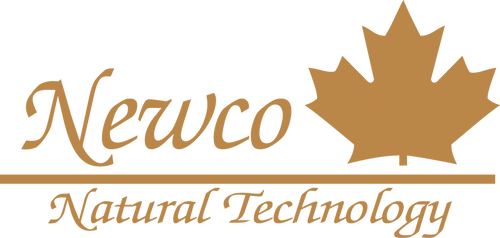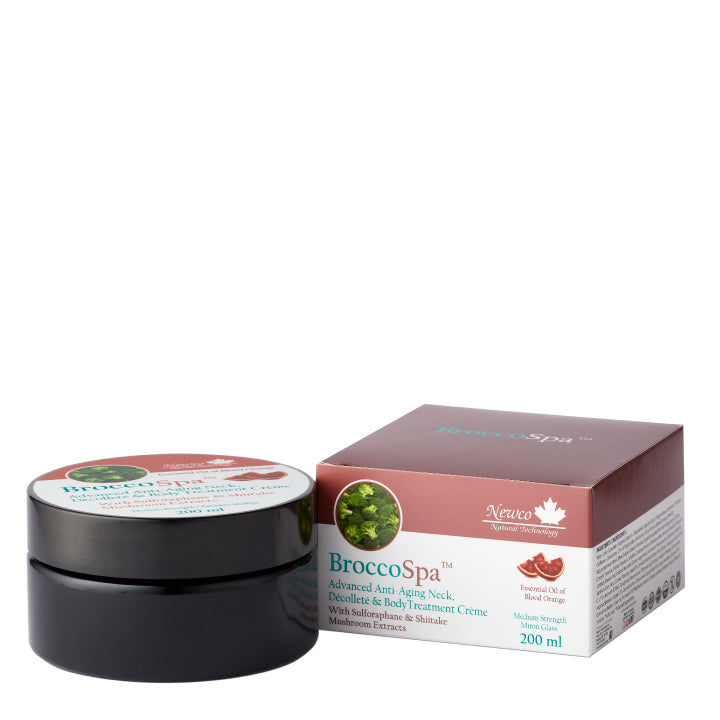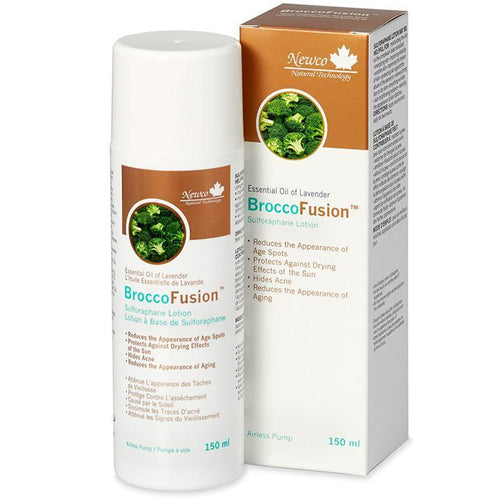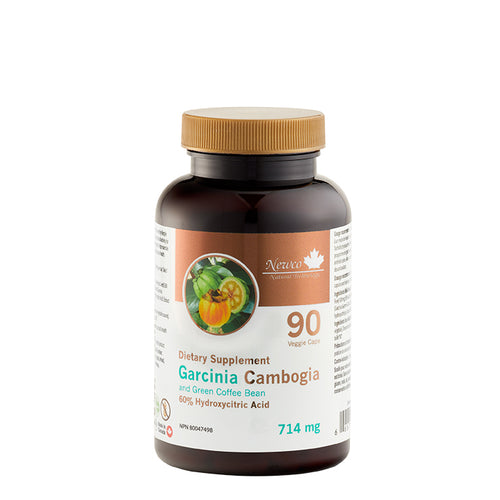Sulforaphane… you’re probably wondering, “what is sulforaphane?”, or “what benefit does sulforaphane provide me?” You may even be pondering if you should use sulforaphane. No longer will you have to search for answers, because this blog will tell you everything you need to know about sulforaphane. By the end, you’ll be an expert on sulforaphane, and even learn how to pronounce it properly!
What is Sulforaphane?
Let’s start off with the most asked question about sulforaphane for those who have never heard about it before: what is sulforaphane? Sulforaphane is a sulfur-rich compound that can be found in cruciferous vegetables such as broccoli, cauliflower, and kale.
Sulforaphane is widely known to be an anticarcinogenic.
If you want to get really scientific, the compound is called, anticarcinogenic isothiocyanate, and is abbreviated like this: C6H11NOS0
How to Pronounce Sulforaphane
If you look in the dictionary, or use the classic Youtube Pronunciation Guide, they’ll tell you pronounce it with the stress on the first ‘a’. It would sound like, sul-fer-AHH-phane. This is all well and good, but in our everyday speech and with the experts we deal with, our preferred pronunciation is more like, sul-FUR-a-phane. Feel free to use either.
Who Discovered Sulforaphane?
Dr. Paul Talalay directed the Laboratory for Molecular Pharmacology at John Hopkins University. In the 1990s, he oversaw research that revealed sulforaphane’s qualities. It wasn’t until 1992 when he and his team discovered that sulforaphane was a cancer-fighting chemical in the Brassica family of vegetables.
The lab’s findings were so big that it landed on the front page of The New York Times! Popular Mechanics even pronounced it as one of the top 100 scientific discoveries of the 20th century.
Ever since the discovery of sulforaphane’s prevention powers, sales of broccoli doubled in the United States. It wouldn’t be surprising if this was connected to Dr. Talalay’s research. After all, who wouldn’t want to improve their health by munching on some vegetables with health-promoting properties?

How Is Sulforaphane Produced?
So, how is sulforaphane produced? Sulforaphane is actually the inactive form of glucoraphanin in foods. It’s only activated when glucoraphanin mixes with myrosinase enzymes. Myrosinase enzymes are produced when a plant is damaged, or in other words, cut or chewed. Thus, when myrosinase is released and comes into contact with glucoraphanin, sulforaphane is produced!
HOWEVER, Newco's BroccoGen 10® Contains,15mg Sulforaphane Glucosinolate. Our Proprietary Sulforaphane is stabilized in its final state for optimal quality, without the need for additional enzymes such as myrosinase.
BroccoGen10 ® is the only broccoli supplement on the market offering proprietary stabilized Sulforaphane™ in the capsule (as opposed to the precursor, glucoraphanin).
Does Cooking Destroy Sulforaphane?
Although cruciferous foods are rich in sulforaphane, the bad news is that cooking these foods (such as boiling) reduces the amount of glucoraphanin. Unfortunately, myrosinase is very sensitive to heat as well.
To get the most sulforaphane out of these foods, you’re best off eating them raw. However, if eating these raw foods don’t seem appetizing to you, it’s recommended to cook them below 140’C. Exceeding 140’C will result in a loss of glucoraphanin. Steaming the vegetables for one to three minutes may optimize levels of sulforaphane as well.
What Are The Benefits Of Sulforaphane?
Sulforaphane is believed to stimulate and release the production of enzymes in our bodies that detoxify substances that are cancer-causing.
Another health benefit sulforaphane provides is that it may have antidiabetic effects for those with type 2 diabetes. A study found that sulforaphane improved hemoglobin A1c, hemoglobin with glucose attached and a marker of blood sugar control in the long term. The study also found that sulforaphane lowered fasting blood sugar levels by 6.5%!
Sulforaphane is also thought to support heart health by reducing inflammation, since inflammation may lead to the narrowing of arteries and is a cause of heart disease.

Treatment
Hair Regrowth
Many choose to use sulforaphane to treat other conditions, including regrowing hair. A study found that sulforaphane promotes hair growth in mice by accelerating the degradation of dihydrotestosterone, which causes the regression of hair follicles in the parietal scalp of humans. This finding suggests that sulforaphane may help with hair regrowth in humans.
Skin
The protection against UVA and UVB rays caused by the sun may also be offered by sulforaphane. In one study, sulforaphane reduced inflammation caused by UV radiation in mice. In another study, Dr. Talalay and his colleagues found that cell damage declined by 37% when broccoli sprout extract was applied for three days prior to UV exposure. From this result, this means that the reduction in cell damage can not only protect against UV damage, but can also provide anti-aging benefits. The decrease in inflammation from sulforaphane may also help skin heal more quickly from acne.
Smoking
Smokers can benefit from sulforaphane as well. Since sulforaphane is an antioxidant agent, it has protective effects against cell damage as noted above. What’s more, a study showed that sulforaphane boosted benzene excretion by up to 61%. Benzene is a carcinogenic from tobacco smoking, so ridding the body of benzene is highly beneficial, especially for smokers.
Anxiety
For those suffering with anxiety, sulforaphane may be able to help. A study found that sulforaphane inhibits the inflammatory response to stress. In addition, sulforaphane was shown to inhibit the hypothalamic-pituitary-adrenal area of the brain. These two inhibitions result in reduced anxiety and lowered corticosterone transmission. Thus, it could be very realistic for sulforaphane to become a treatment for anxiety disorders.
Liver
Sulforaphane is also thought to improve liver function. A study concluded that a dietary supplement of broccoli sprout extract containing glucoraphanin, the precursor of sulforaphane, is likely to be highly effective in improving the functioning of the liver through the reduction of oxidative stress. A different study even found that a dietary supplement with sulforaphane attenuated liver damage! For those with liver problems, it might not be a bad idea to incorporate some sulforaphane into your diet.
Foods That Contain Sulforaphane
Broccoli Sprouts
If you’re looking for the richest food source of glucoraphanin sulforaphane, three day old broccoli sprouts will be the highest concentrated food you can find. As a matter of fact, three day old broccoli sprouts contain 10 to 100 times more glucoraphanin sulforaphane (by weight) than mature broccoli or cauliflower! More specifically, a 1-ounce serving of broccoli sprouts provides 73 milligrams of glucoraphanin sulforaphane.
Brussel Sprouts
Brussel sprouts are another fantastic source of sulforaphane. They are actually one of the better sources of glucosinolates, or sulforaphane precursors, than other foods. A ½ cup serving (44 grams) of raw brussel sprouts provides about 104 milligrams of glucosinolates.
Glucosinolates are water-soluble, and leach into cooking water. As these phytochemicals are easily destroyed, it’s best to cook them using other methods not involving as much water, such as steaming or microwaving.
Kale
If brussel sprouts aren’t your favourite, try kale! Kale is an excellent source of sulforaphane, and can be cooked in a variety of ways. A popular method of cooking kale is baking. A trending snack is kale chips, where kale is cut into small pieces and baked in the oven. Plus, you can turn them into a tastier snack by dressing them with olive oil and sprinkles of salt. Baking doesn’t require water unlike other cooking methods. However, be sure to keep the heat low as high temperatures will decrease the amount of glucoraphanin.
Cauliflower
Cauliflower is another vegetable high in sulforaphane. What’s more surprising is that cauliflower sprouts are even higher in this phytochemical! However, as cauliflower sprouts can be harder to find and are less commonly eaten, the more commonly found and eaten cauliflower plant will give you a great dose of sulforaphane.
Sulforaphane Supplements
If you find yourself without the time to get your dose of sulforaphane from natural foods, sulforaphane supplements are a quick and easy way to get your daily dose of this phytochemical. They’re typically made from broccoli or broccoli sprout extract, and are generally concentrated so they contain more sulforaphane than what you can naturally find in food.
In terms of if sulforaphane supplements are effective, more research is required to determine the effectiveness of these supplements.
There is not enough scientific information to determine the ideal dose and time between doses for humans. However, it has been noted that 0.1-0.5 mg/kg of sulforaphane is bioactive in rats. This is an estimated dose in humans of:
- 7-34 mg for a 150 lb person
- 9-45 mg for a 200 lb person
- 11-57 mg for a 250 lb person
To get your quick fix of sulforaphane, you can find sulforaphane supplements at health food stores, online retailers or right here at Newco!
Bottom Line
Now that you know all about sulforaphane and its benefits, don’t you wish you discovered this phytochemical earlier? You know what they say, it’s never too late. Do yourself some good and take in some sulforaphane today! Your health will thank you for it.
Newco’s world original sulforaphane product series
Over 2 decades have been dedicated to creating quality, safe & highly effective natural products. The result? The world original sulforaphane product series which includes chemical-free skin care, supplements, and food products.
- BroccoFusion™ Ointment was featured on the Oprah Winfrey Network, in May 2012. This multi-purpose ointment can be used for treating skin conditions from hyperpigmentation to burns & wounds.
- BroccoFusion™ Lotion is a moisturizer that protects against the drying effects of the sun and abuse of the elements, hides acne and skin blotches, smoothes wrinkles and brightens the skin.
- BroccoFusion™ Day & Night Cream moisturizers contain sulforaphane and luxurious oils, such as Hemp, Coconut, and Argan, to soothe dry skin and help reduce the signs of aging.
- BroccoGen 10® Capsules are potent sulforaphane antioxidant supplements containing 3-day old broccoli sprout concentrate, carefully extracted without the use of heat or harsh chemicals.
- BrainMaintain+™ Capsules are a source of antioxidants to enhance cognitive function and performance. Ingredients include sulforaphane, curcumin, resveratrol, alpha lipoic acid, ginkgo biloba, and yerba mate.
- Brocco-Chocco™ Chocolate Bars are made in collaboration with master chocolatier, Bernard Callebaut. Each fair trade bar is made of 75% dark chocolate, contains 2-4 lbs. of broccoli sprouts and pink Himalayan salt.







4 comments
Is this product sold in any retail outlets in Calgary?
HI!
I’m enjoying everything that I ordered and the samples too.
Are there any studies about the effects of sulforaphane on endometriosis? and glaucoma? Please forward if you know of any.
Thanks so much,
Barbara
Is this product sold in any retail outlets in Calgary?
I’ve been using Newco Broccogen 10 capsules for 5 years ever since I was diagnosed with breast cancer in 2014. I told my oncologist that I was taking 4 capsules per day along with Turkeytail capsules and he told me to keep taking them. I go for CT scans every 4 months because my liver has spots on it now so he is keeping a watch on that